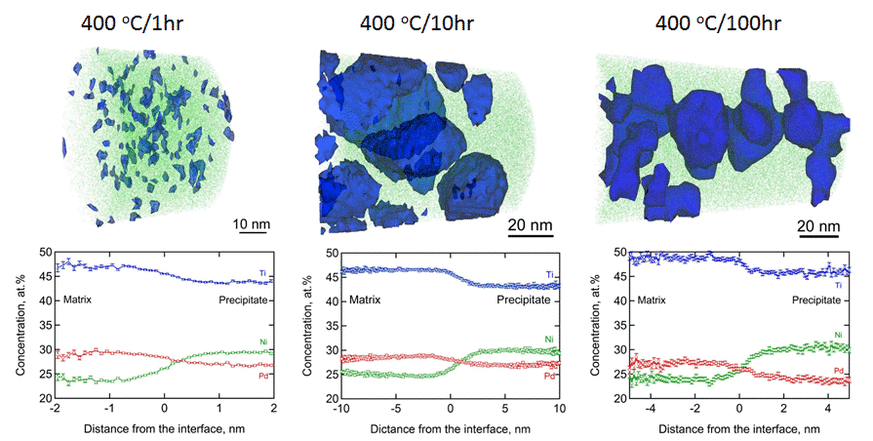Tailored Precipitation in Shape Memory Alloys
The shape memory effect is a phenomenon whereby a material undergoes a reversible, crystal structure change when heated and cooled though a transformation cycle. During this particular phase transformation, the deformation is reversible and the original shape, even against an opposing load, is recovered and can act as a solid state actuator. The NiTi alloy, commonly referred to as Nitinol has received considerable attention for its shape memory properties. Its transformation temperature is generally between -100 C to 100 C, which limits it to use in room temperature applications. In addition, equiatomic and Ti-rich compositions can exhibit dimensional instability upon repeated cycling. Professor Thompson's burgeoning research program in this field is in the investigation of Ni-rich Nitinol alloys where upon macro-alloying it with Pt, Hf, Zr or Au, can facilitate nanoscale precipitation and increase the transformation temperature while retaining dimensional stability. Professor Thompson's group utilizes the TEM and atom probe to study the structural and compositional stability of these precipitation reactions and their relationship to shape memory behavior.

Atom probe tomography reconstruction of the compositional evolution of P-phase precipitates in a Ni-Ti-Pd alloy. The blue features are isoconcentration surfaces of the precipitates at different aging times. The precipitates extract Ni from the matrix biasing the alloy to be Ti-Rich which increases the SMA transformation temperature.

